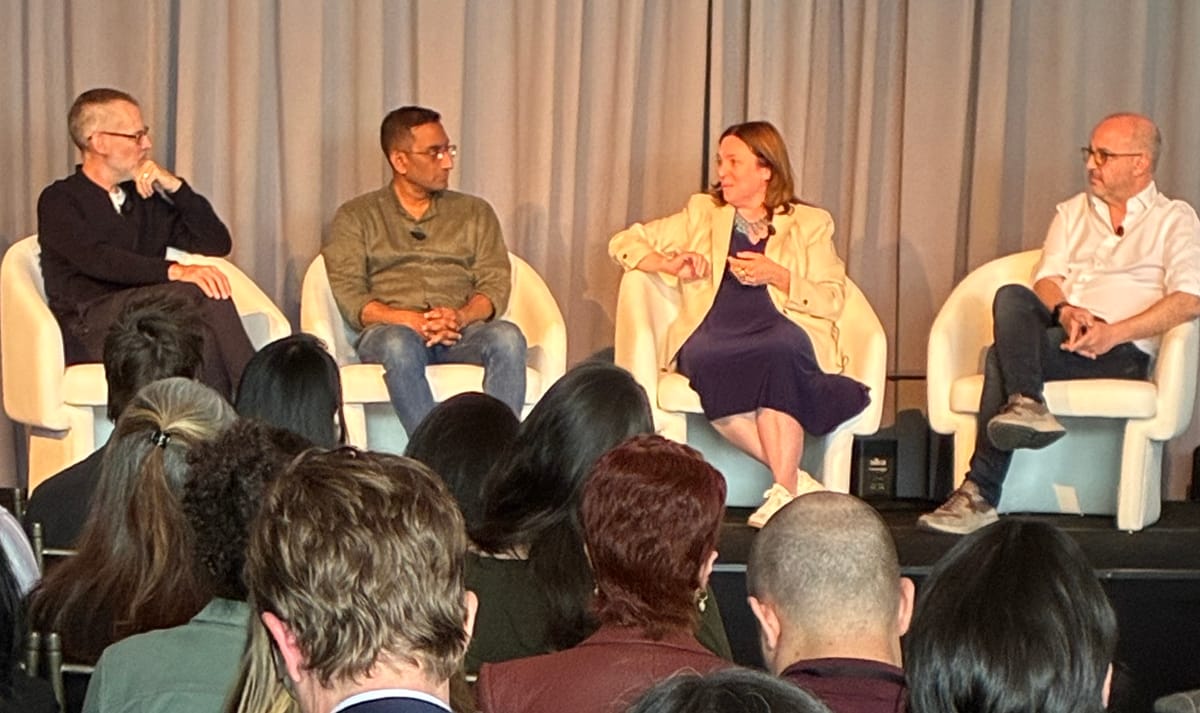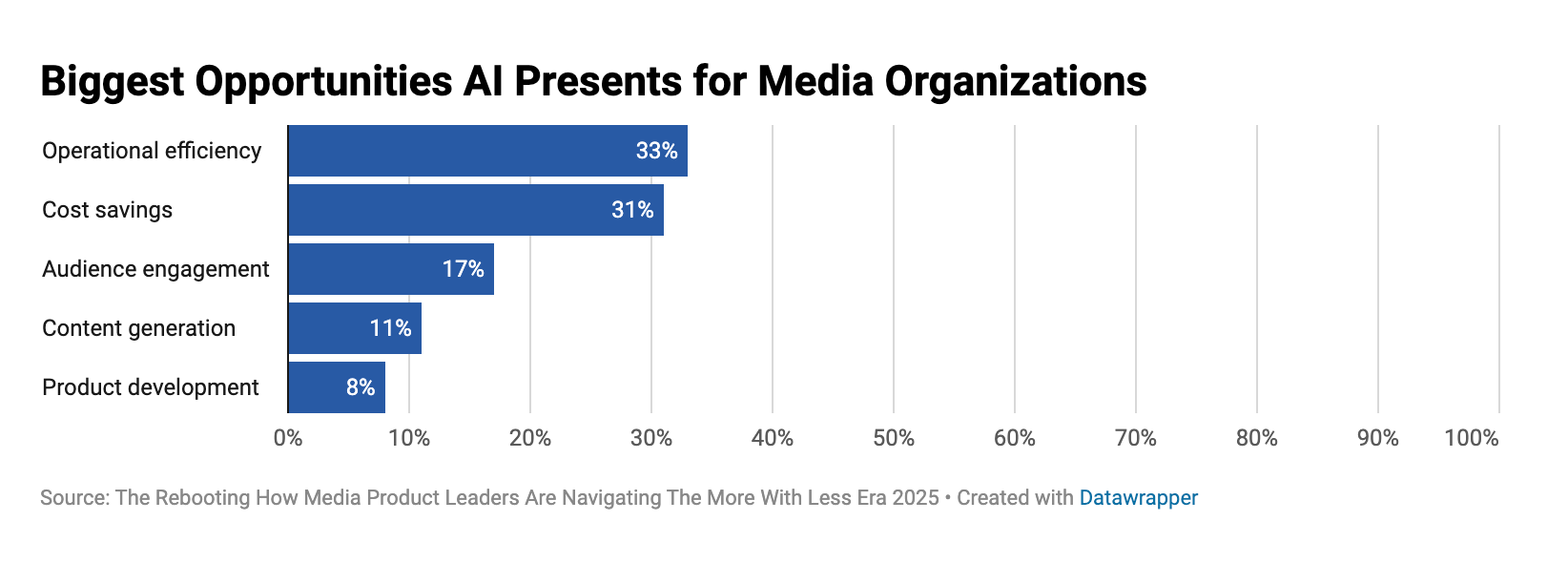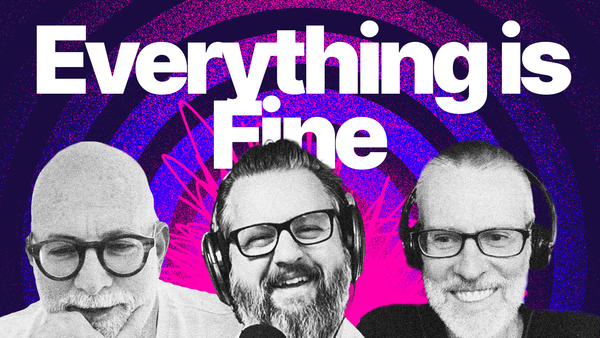The decline and fall of the article page
It's time to move on

Yesterday, we held our second annual Media Product Forum in collaboration with WordPress VIP at Pier 59 in New York City. We convened over 100 product leaders at publishers for an afternoon of discussions that centered on an essential question: What should publishers be building now? More on that answer below. Also, we will be turning the sessions into podcasts that I’ll publish over the next couple weeks.
A recurring theme of the discussions yesterday was how publishers get their tech stacks in order for the future, even if it’s unclear where the open web is going. I’m looking forward to digging deeper into this issue on May 21 at 1pmET with Aaron Segal, Recurrent’s head of product and engineering. During this Online Forum, sponsored by WordPress VIP, we will go into the details on how Recurrent replatformed and didn’t slow down.
Aaron and I will be joined by WordPress VIP technical account manager James Giroux to walk through how Recurrent shifted its portfolio of 25 sites. We’ll get into the strategic decision to embrace an open source approach, as well as the tactical details of how Recurrent’s new tech stack is architected to accommodate traffic surges and also for the inevitable shifts required to respond to a rapidly changing landscape as we fully enter an AI era.
Register for this interactive virtual event. If you cannot make it live, you’ll be sent both a link to the replay and a cheatsheet rundown of the takeaways.

How scholarly publishers use first-party data
Scholarly publishing isn’t immune to the same pressures the broader media business faces: shifting revenue models, fractured audiences, and the slow death of third-party data. But it also has its own set of hurdles—like how to align engagement across institutions, individuals, and platforms. This guide from BlueConic gets specific about what’s working. It lays out 10 clear use cases where first-party data isn’t just collected, but actually used to drive business outcomes: better subscription retention, more targeted outreach to authors, and even data-backed sales pitches to institutions.
Is it time to retire the article page?
During a prep call, Bridget Williams, the chief product and strategy officer at Hearst Newspapers, asked the kind of fundamental question I like: Why are we still shipping the same article page? The 750-word article is the atomic unit of news publishing. And variation of it are still the overwhelming majority of what publishers ship every day.
It is a relic of print too. The format rose to accommodate typesetting limitations. Yet in 2025, as people increasingly turn to AI chatbots to get answers or turn static content into interactive podcasts via Google’s NotebookLM, the static article page has never felt more out of date. It’s strategic value is at a nadir. Page-based publishing models are being compressed. Anonymous Banker put it well: “If you're a publisher with a mostly ad-supported site, odds are your business will be worth less next year than it is now.”
The inevitable future of the article page is to make it more flexible. As a kid, I was fond of the choose-your-own-adventure books, where you would go down different paths based on your preferences. This turned what was a static one-way experience of reading into something more participatory. The article page will need to be more like that. Articles should be able to be remixed. If someone wants it as a five minute podcast, so be it. Or just a list of bullet point takeaways. Or to read the transcripts of the interviews since bias tends to creep in with what was cut rather than what was added.
"Nobody has this worked out and I was shocked at how big the AI-ambition-execution gap really is," one roundtable leader noted. "People are making big (theoretical) bets but are really struggling to operationalize."
TRB contributing writer Daniel Kolitz attended the MPF and gathered his highlights, including:
- The end of the article page
- The looming AI reckoning
- Preparing for Google Zero
- What it means to be product-centric
Thanks to WordPress VIP for its partnership to make this gathering happen. It was great to connect with many readers and listeners of The Rebooting Show and People vs Algorithms.
Thanks to our speakers: Dotdash Meredith CEO Neil Vogel, Newsweek chief product officer Bharat Krish, Mansueto Ventures COO Anne Marie O’Keefe, The Free Press chief growth officer Daniel Hallac, WordPress VIP CTO Brian Alvey and Hearst chief product and strategy officer Bridget Williams.
Also thank you to our roundtable discussion leaders: Adam McClean, chief product officer of Dotdash Meredith, Natasha Cholerton-Brown, Anne-Marie Goulet, CMO at WordPress VIP, GM of The Arena Group, Michael Liss, vp of product at The New York Post, Brian Alvey, CTO of WordPress VIP, David Symdra, vp of product at Politico, Caitlyn Shaw, director of growth strategy at Gear Patrol, Emilie Harkin, svp of growth at The Guardian, Jeremy Klaperman, CFO at WordPress VIP, Mark Zohar, CEO of ViaFoura, Josh Fosburg, head of media and entertainment at WordPress VIP, Bryan Davis, director of product at The Associated Press, Andrew Ziegler, director of audience strategy at Hearst Magazines, and Kim Lau, president of Scientific American.
The incrementalist trap

One of the features of the more-with-less era is that size and scale are often working against many publishers. It’s a classic problem: These organizations become too big to act nimble yet not nearly as large enough to have much leverage. One top product leader and veteran of large publishers summed it up this way in The Rebooting’s media product research report:
“The biggest barrier that I had working for a giant legacy company is the legacy. They built their own CMS. All the tech was custom. I had a huge team, but I would say that so much of their effort was taken up in keeping the lights on. Maintenance. Incrementalism—incremental features that needed to be done. There was a risk aversion, a resistance to making big bets. For me, the best analogy is an ocean liner versus a speed boat.”
See the report for more insights into how media product leaders are adapting their strategies. Thanks to WordPress VIP for sponsoring this research.
Thanks for reading. For partnerships information, see our partnership packages. The Rebooting has partnered with a broad array of technology and services companies that want to engage with media and marketing executives.



